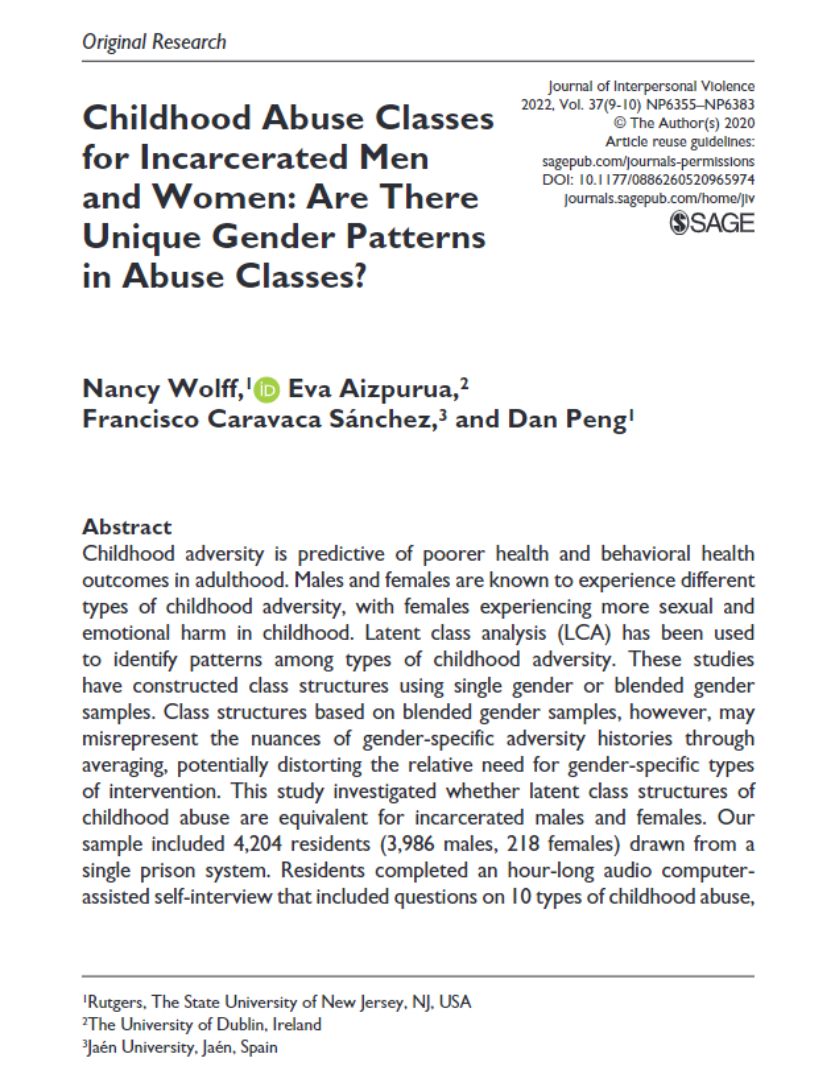Childhood adversity is predictive of poorer health and behavioral health outcomes in adulthood. Males and females are known to experience different types of childhood adversity, with females experiencing more sexual and emotional harm in childhood. Latent class analysis (LCA) has been used to identify patterns among types of childhood adversity. These studies have constructed class structures using single gender or blended gender samples. Class structures based on blended gender samples, however, may misrepresent the nuances of gender-specific adversity histories through averaging, potentially distorting the relative need for gender-specific types of intervention. This study investigated whether latent class structures of childhood abuse are equivalent for incarcerated males and females. Our sample included 4,204 residents (3,986 males, 218 females) drawn from a single prison system. Residents completed an hour-long audio computer-assisted self-interview that included questions on 10 types of childhood abuse, depression, and anxiety symptoms, the Beck Hopelessness Scale (BHS), Buss-Perry Aggression Questionnaire, and Criminal Sentiments Scale-Modified (CSS-M). Overall, female residents were both more likely to experience childhood abuse and have more extensive victimization experiences. Small subgroups of males, however, had even more extensive victimization experiences. Abuse patterns for males and females, while optimally clustering in four classes, are rather unique, especially for higher abuse classes, in terms of distribution of membership and types of abuse. These differences may matter in terms of identifying the relative need for therapeutic intervention among incarcerated males and females and targeting those interventions in ways that reflect the gradient and density of therapeutic need. The next step is to test whether using blended or gendered latent class structures matters in terms of predicting outcomes, such as prison-based behavioral health problems, suicidality, and victimization.
Childhood abuse classes for incarcerated men and women: Are there unique gender patterns in abuse classes?
Citation:
Wolff, N., Aizpurua, E., Sánchez, F. C., & Peng, D. (2022). Childhood Abuse Classes for Incarcerated Men and Women: Are There Unique Gender Patterns in Abuse Classes? Journal of Interpersonal Violence, 37(9–10), NP6355–NP6383. https://doi.org/10.1177/0886260520965974
